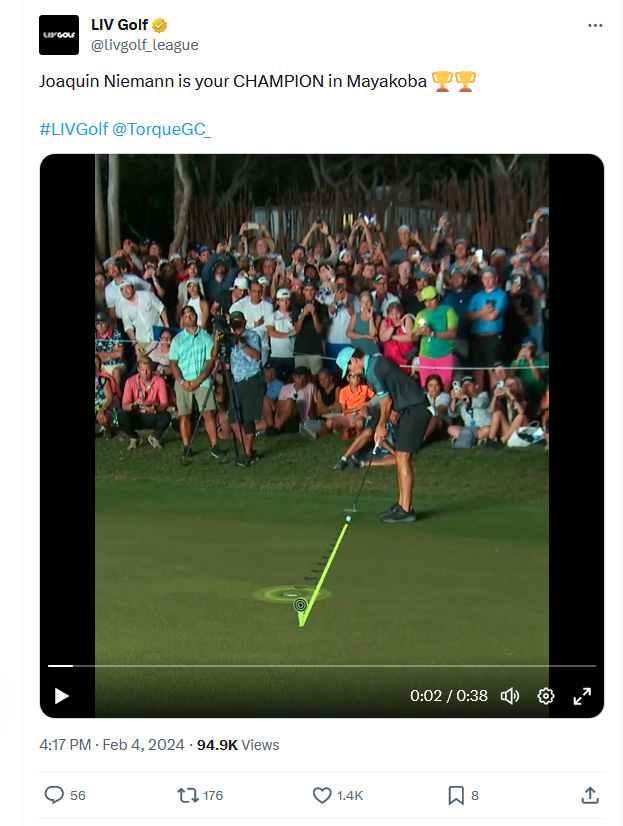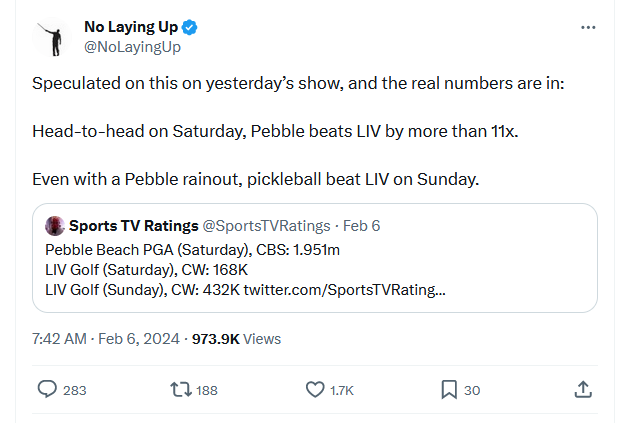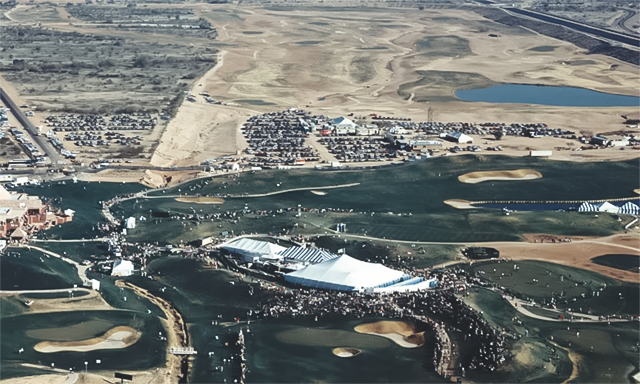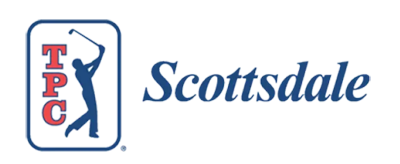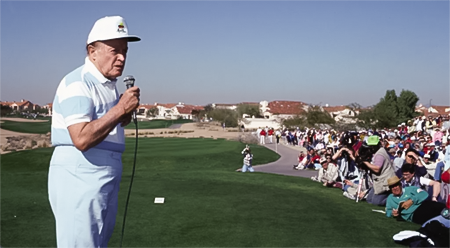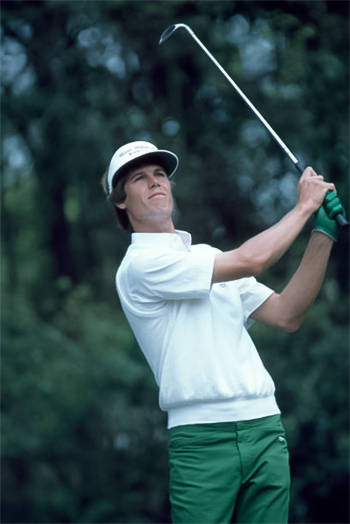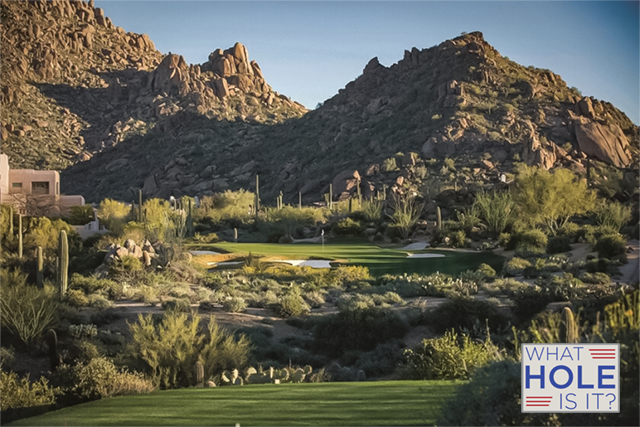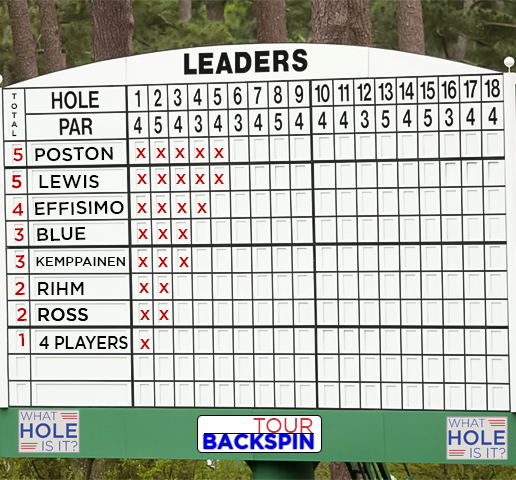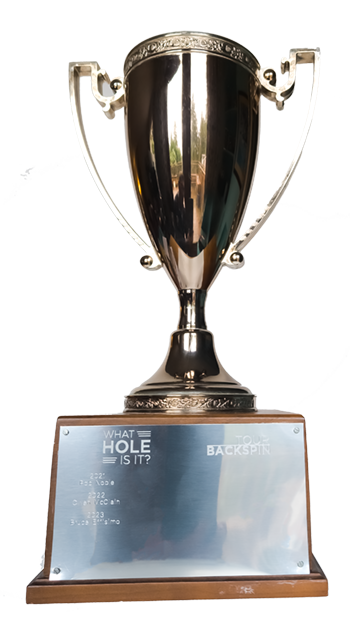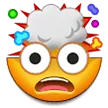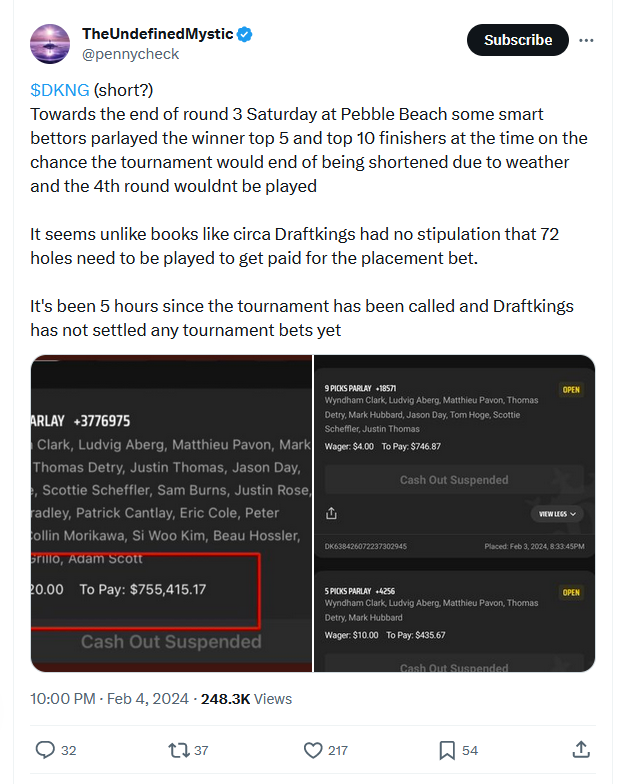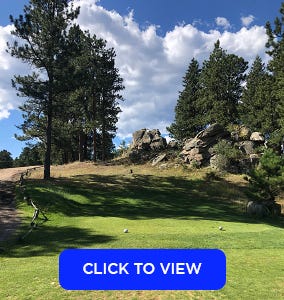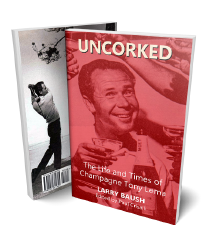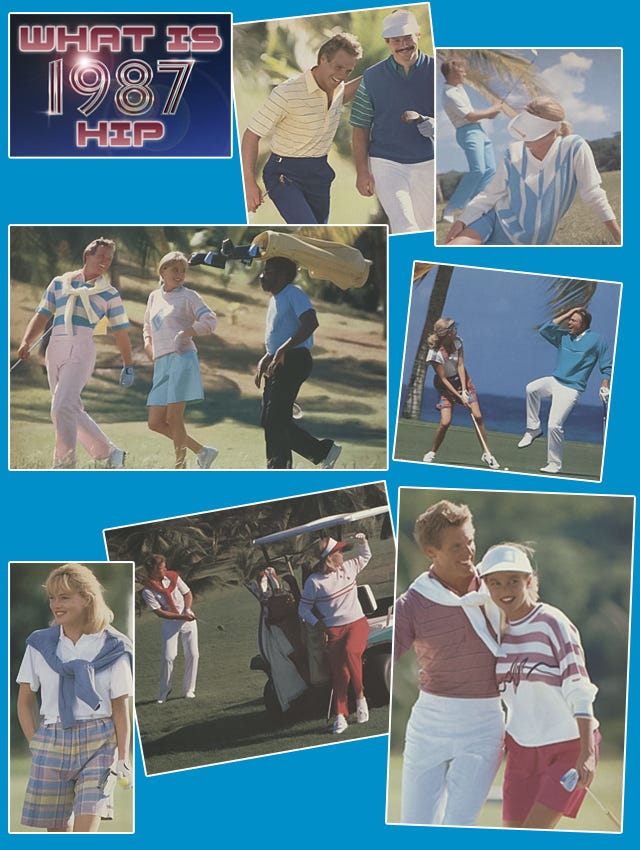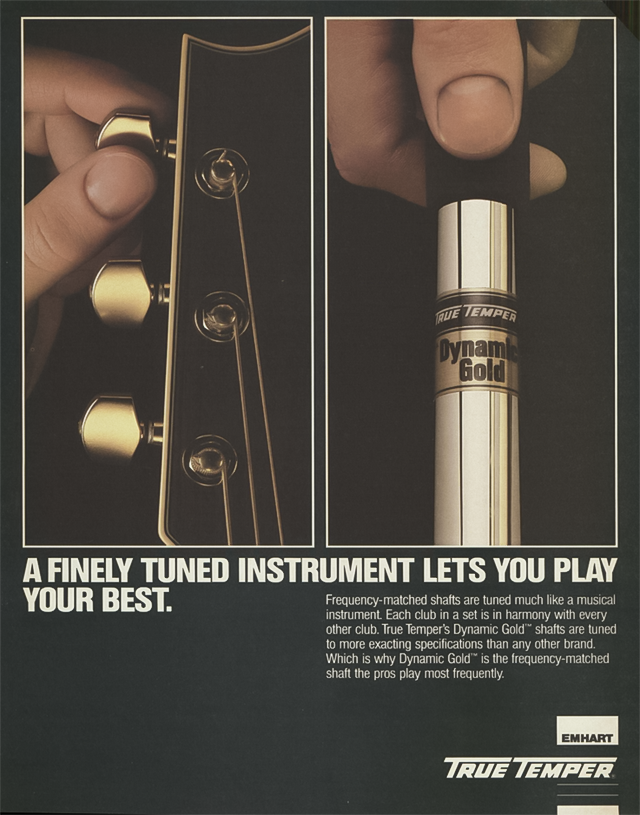It’s one of the best sports weekends of the year capped off by Super Bowl Sunday. The WM Phoenix Open leads off the action and although this event is not a Signature Event, it will still feature an outstanding field. And if watching the “People’s Open” party atmosphere doesn’t get you ready for the big game, nothing will. We’re covering the 1987 event when the TPC at Scottsdale was first used for the tournament and Paul Azinger won his first tour event.
If you want more on the Phoenix Open, check out our archives. We’ve written about the 1978 event HERE, the 1963 event HERE, and the 1975 event HERE.
A strange thing happened when I walked into the lounge after my round on Sunday. With no football being played, and the AT&T final round washed out, the televisions were tuned to LIV Golf. I heard some interesting things as I sat down and ordered my beer.
“Look at that leaderboard.”
“Why can’t the guys on the PGA TOUR wear shorts?”
But mostly, we talked about the ways that the men’s professional golf tours can somehow work something out where we can see the best players play against each other on the best courses (sorry El Camaleón).
The broadcast on the CW Network featured some innovations and the outcome was exciting with a playoff needed for Joaquin Niemann to secure the win. I was impressed with the level of interest when the only competition was a re-broadcast of the DP World Tour that wrapped up earlier in the day. That being said there’s this:
In last week’s Tour Backspin Poll, we asked how you felt about the changes that were made this year to the AT&T Pebble Beach event. There were 69% of respondents who loved the changes because they liked watching the best players on an iconic course while 31% hated it because they miss the pro-am antics.
So did you catch the LIV Golf broadcast on Sunday? What did you think? Let us know in this week’s Tour Backspin Poll.
Tour Backspin Poll
What do a guitar and your irons have in common? Find out in this week’s Vintage Ad. Scroll down to view.
Check out Paul Azinger’s action in this week’s Swing Like a Pro.
I found it very difficult to find a song from 1987 up to the standards of this esteemed newsletter so I settled for a Grateful Dead song for this week’s Tour Backspin Music. It is the band's only recording to ever reach the Top 40 on the Hot 100. Listen HERE.
Do you know what happened today in golf history? Or which famous golfer has a birthday today? Me, neither. But I do know where to go to find out. Check out the Your Golfer’s Almanac podcast. Host Michael Duranko celebrates birthdays, milestones, and other accomplishments that occurred on the day in golf history. Listen HERE.
We’re playing 1987 Phoenix Open Trivia in this week’s Tour Backspin Quiz. Scroll down to play.
Did you miss a previous newsletter? You can view it HERE. Forward this email to a friend. Was this newsletter forwarded to you? You can sign up HERE.
Okay, we're on the tee, let's get going.
Enjoy!
Larry Baush
Course Completed Just Under the Wire For Phoenix Open
It is Wednesday, August 7th, 1985, and a small crowd is gathered for the groundbreaking ceremony at a 400-acre parcel of land near North Scottsdale Road and East Bell Road behind the Central Arizona Project dike. The ceremony celebrates the beginning of the Tournament Players Club Stadium Course, and despite being in Scottsdale, it will be the home of the Phoenix Open.
The new course was designed by experienced golf course architect, Jay Moorish, with the assistance of Tom Weiskopf, a major champion on the PGA TOUR. It would be the first golf course project that Weiskopf would be involved in and he spoke with reporters at the groundbreaking ceremony. He spoke about moving the Phoenix Open from the Phoenix Country Club to the new stadium course in Scottsdale.
“It’s not that Phoenix Country Club is not a good course,” Weiskopf explained. “It’s just that time has passed it in a tournament players situation. Phoenix Country Club is a wonderful club course, but it is confined on a tiny piece of property. Tournament golf has surpassed that.”
PGA TOUR commissioner Deane Beaman was also present at the groundbreaking ceremony and explained that the stadium-style courses, a concept that he came up with, gave the fans the same safety, comfort, and visibility opportunities as other professional sports enjoy in their venues.
Weiskopf said that the stadium course would play approximately 7,100 yards from the championship tees and that the course would be ready for the 1987 Phoenix Open. In May of 1986 Verne Boatner, columnist for the Arizona Republic, joined other members of the media on the top of a large, sculpted mound at the developing course and described the view.
Below us were small, glistening patches of green sprinkled among acres of bald, brown earth. Ribbons of pink, later identified as cart paths, zigzagged through the area. Two large blotches of blue were man-made lakes.
To Boatner, there was little doubt that the course would be ready for the Phoenix Open in January. Most of the major work had been completed including the moving of 1.5 million cubic yards of dirt. Bent grass had been planted on 11 of the 18 greens and the bunkers would be seeded in the next week. The fairway seeding would begin soon.
“Unless there’s a catastrophe of major proportions, this course will be ready for the Phoenix Open,” Weiskopf said.
By the first weekend of January, the Scottsdale Princess Champions Bar and Grill at the new TPC Scottsdale conducted interviews for both full and part-time staff in preparation for the opening.
By Wednesday, January 7th, the Phoenix Open had secured entries from 15 of the top 20 money list leaders from 1986 including Bob Tway (#2), Payne Steward (#3), Andy Bean (#4), Dan Pohl (#5), the defending Phoenix Open champion, Hal Sutton (#6), and Tom Kite (#7).
The same day, the Thunderbirds, a prominent civic organization, and the sponsors of the Phoenix Open, invited the local press to play the new course in Scottsdale. Bob Hurt, columnist for the Arizona Republic, gave his impressions about the experience with just two weeks remaining before the first tee shot would be launched in the Phoenix Open. He was not impressed.
He wrote about the remaining construction equipment, the half-finished clubhouse, and the condition of the course.
Golf officials frequently circle areas unfit for play with lime and label them “ground under repair.” At first glance, I was ready to suggest the whole dern course be limed and the tournament dropped back at the Phoenix Country Club.
Upon second glance, Hurt was impressed at the amount of work that had been accomplished and, after talks with officials, was convinced that the course could play host to the PGA TOUR.
Hurt also detailed what you would expect after paying the exorbitant green fee of $53.
The cart comes with windshield, water thermos, a sand-seed mixture to fill divots, and, at an added charge, a cellular phone.
“It’s a little too nasty for me. There are too many severe obstacles out there. Sixteen-foot bunkers—that’s ridiculous.”
The pros arrived in town straight from the Bob Hope Desert Classic which was won by Corey Pavin. This was the first year that the Stadium Course at PGA West was used for the event and the pros were not fans of it.
“It’s a little too nasty for me,” Mark Calcavecchia, who finished third in the Hope said. “There are too many severe obstacles out there. Sixteen-foot bunkers—that’s ridiculous.”
He did say, though, that his first impression of the TPC of Scottsdale was more favorable.
“It looks pretty nice,” he said. “It looks like real golf. It’s fine to have humps and bumps and things so people can see.”
Ready or not, the Phoenix Open was about to tee off at the new TPC of Scottsdale Stadium Course with the opening pro-am. Tickets were priced at $15 per day.
At the conclusion of the pro-am, it was clear that both the players and the spectators agreed that moving the tournament from the Phoenix Country Club to the TPC of Scottsdale was a step in the right direction. Spectators enjoyed grand vistas with views of the action and the younger professional players endorsed the new course quickly while some of the older professionals were more reserved. But most players qualified their opinions of the course with a “when it’s done” comment.
In the first round, Tom Weiskopf stumbled out of the gate recording an 80, not the best omen for one of the course’s designers. A frost delay of an hour and a half did not help things. Brad Faxon, teeing off on the 10th tee at 7:46 (closer to 9:15 due to the frost delay) fashioned an 8-under-par 64. When he reported to the pressroom for a post-round interview, he was informed that his 64 was a course record.
“I bet it’s broken today,” Faxon predicted.
Sure enough, it was. Mark O’Mera shot a 63 to capture the lead by one shot. A slew of players was at 65, one player at 66, and another crowd at 67, including Paul Azinger.
Howard Twitty, who helped Weiskopf with design elements of the TPC at Scottsdale, added a second-round 65 to his first-round 68 to grab a share of the lead with Steve Jones who had rounds of 65 and 68. Calcavecchia and O’Meara were a stroke back at 133 tied with Jay Haas and Corey Pavin. Paul Azinger was down the leaderboard at 136 while Faxon blew up to a 74 and was now five off the lead.
O’Meara’s course-record was beaten on Saturday when Doug Tewell shot a 62 for a three-round total of 202. He was two strokes off the lead set by Pavin who shot a 66, and one behind Paul Azinger who fired a 65. O’Meara and Calcavecchia both had 70s and were four-strokes off the lead.
Azinger came out on the PGA TOUR in 1982 but had struggled for his first few years before winning $254,019 in 1986. He would do even better in 1987. He credited his improvement on a “mental adjustment” that allowed him to break away from the self-imposed mental pressure he would find himself caught up in. He also figured out that he would often focus on a match-play mentality against the leaders whenever he was in contention with disastrous results.
“I can concentrate for 18 holes now,” he said to the press after his round.
“I said I could care less. I was trying not to play match play with Hal Sutton. After I asked on the 18th fairway (where he now held a one-stroke lead), I wished I hadn’t, because I got nervous.”
On Sunday, Hal Sutton, teeing off early, posted a 64 surging up the leaderboard. Azinger tapped into his new mental attitude during the fourth round. When he arrived at the 15th tee someone asked him if he wanted to know how Sutton, playing three groups ahead, was doing. Had he wanted to, he would have learned that the two were tied.
“I said I could care less,” Azinger recalled for the press. “I was trying not to play match play with Hal Sutton. After I asked on the 18th fairway (where he now held a one-stroke lead), I wished I hadn’t, because I got nervous.”
Talking with Michael Gonzalez and Bruce Devlin on the Fore the Good of The Game podcast, Azinger recalled playing the par-3 16th hole.

“I remember hitting a great bunker shot on the 16th hole and making a 15-foot, or 18-footer for par,” he recalled. “That 16th hole was scary then and it was already wild.”
“I was nervous as a cat. I just kept breathing deep so I didn’t throw up.”
How nervous did he get on the 18th fairway?
“I was nervous as a cat,” he admitted. “I just kept breathing deep so I didn’t throw up.”
After Sutton missed a 5-foot putt for par on the final hole, Azinger only needed to finish with a par to secure his first victory of his career. Despite “shaking like a leaf,” he managed to hit the fairway with his drive and placed his approach shot 22-feet from the hole. He lagged his putt to six inches. As twilight descended, he watched his playing partners, Pavin and Tewell, putt out and then he tapped his six-incher in for the winning par.
“Hallelujah! It’s just a dream come true,” said the elated Azinger. “How can I describe the way I feel right now?”
A first-time champion on the tour, who was not sure he was ready to be a champion, on a first-time course that may have not been ready for the limelight, proved to be a winning combination for a city that wasn’t sure a move from a venerable old course was a good idea. Now the course is one of the fan favorites each year, and one that helped launch the golf course architecture career of Tom Weiskopf.
Follow us on Facebook, Instagram, Twitter, YouTube and Threads
BONUS STORY
Falling on the schedule right after the inaugural use of the PGA West Stadium Course, which received a lot of criticism from the touring pros, caused more than a little nervousness for the backers of the Phoenix Open. Would the new Stadium Course at TPC Scottsdale fall victim to the same criticisms?
They needn’t have worried. Although it needed to mature, the touring pros liked what they saw at the new course in Scottsdale. Interestingly, in pre-tournament coverage of the event, the holes that were highlighted for fans did not include what has become the iconic calling card of the tournament—the par-3 16th hole.
“It’s bad for the tour, bad for the players and bad for the Bob Hope Desert Classic if we were to ever play PGA West again.”
Just how mad were the touring pros concerning the Pete Dye designed course at PGA West? Boiling mad. In Scottsdale, a week removed from playing the PGA West Stadium Course for the Bob Hope Desert Classic, members of the tour policy board informed tour commissioner Deane Beman to expect a petition from the players demanding that the course not be used again for tour events.
“It’s bad for the tour, bad for the players and bad for the Bob Hope Desert Classic if we were to ever play PGA West again,” said Roger Maltbie, a member of the policy board. “It’s my opinion it’s best for the future of the tour if we never play there again.”
“It’s spiteful, hateful,” Raymond Floyd said about the course that the USGA rated as the toughest course in America.
Beman was aware of the criticism and went on the record about the course saying, “I think the players need to play it a few times to become comfortable with it.”
Maltbie disagreed saying, “It’s an optimistic thought on the commissioner’s part, but it’s wrong.”
Dye weighed in on the controversy saying, “I try to build mine as easy as I can for the amateurs, which proved out to be, and difficult for the pros. I ought to be put on a pedestal.”
With a few design tweaks here and there, advances in equipment technology, and the physical training that today’s touring pros adhere to, the PGA West Stadium Course today does not present the same challenges it did in 1987.
The Tour Backspin Show podcast episode with Chuck Courtney is unlocked for everyone. Chuck talks about his career on the PGA TOUR that lasted over a decade, growing up at La Jolla Country Club, his mentor Paul Runyan, and his friend Carl Welty. Listen HERE.
Upgrade to premium to get early access to The Tour Backspin Show podcast and videos.
Listen to The Tour Backspin Show podcast on Substack with the above links, or on Spotify, Apple Podcasts, or iHeart Radio.
Thanks for reading! Please help us grow by sharing this article with your friends and family.
Or, share this link.
WHAT HOLE IS IT?
Are you on the leader board?
Congratulations to Alan Wrzesien who correctly identified #16 at Pebble Beach Golf Links in Pebble Beach, CA, in last week’s WHAT HOLE IS IT? contest. Alan beat out nine other correct answers in the random drawing and a prize pack is on the way to him. Submit your answer for this week and get yourself into the race for the Herbert C. Leeds Trophy, our new perpetual trophy for the annual winner.
PGA TOUR Wrap-Up | AT&T Pebble Beach
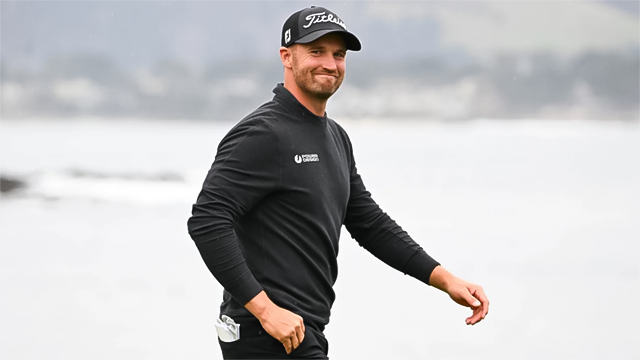
What an anticlimactic finish to the AT&T Pebble Beach. This Signature Event was shaping up to be an exciting finish before the brutal weather that has been pounding California forced the cancellation of the fourth round.
Wyndham Clark had a third round for the history books setting a course record by posting a 60. He left putts tantilizingly short, two for birdies and one for an eagle, on the last three holes. Make one of them and he would have carded a 59, make all three and it could have been a 57.
Clarke was deemed the champion on Sunday night when it became apparent that the fourth round could not be played in a timely manner.
Read the PGA TOUR recap HERE.
Clips You Might Have Missed
There’s no 60 in the third round without this great bogey.
Shootin’ darts at the 7th hole.
The house always wins.
Tour Backspin Quiz | Phoenix Open Trivia
What benefit provided by the 1987 Phoenix Open proved to be the most popular for the touring pros and their wives?
Scroll down for answer
Swing Like a Pro
Paul Azinger’s swing.
Blind Shot
Click for something fun. 👀
Jim Nance is one cool dude. Check out this piece of memorabilia as told by Golf Digest.
The Tour Backspin Music
Do you have a touch of grey? Then you’ll like this tune from 1987. Click HERE to listen.
Uncorked, The Life and Times of Champagne Tony Lema tells the story of one of the tour’s biggest stars in the mid-1960s. A fascinating glimpse into the traveling caravan that was the PGA TOUR during an era where the fields were full of “Mad Men” era personalities. From a hardscrabble youth spent on the “wrong side of the tracks” in the Oakland suburb of San Leandro, to the temptations of Elko, Nevada, to the bright lights of the PGA TOUR, Uncorked tells a story of determination, redemption and, above all else, a love story that documents how Betty, Tony’s new wife, provided the direction and motivation for him to become a top star. Order on Amazon.
WHAT IS HIP?
Tropical hues in 1987.
Tour Backspin Quiz Answer:
The Friends Forever, a 24-hour professional child care agency provided on-site daycare to the players in the 1987 Phoenix Open. The services provided by Friends Forever allowed wives to follow the action on the course instead of watching the kids. Players (and their wives) who took advantage of this service included Payne Stewart, Curtis Strange, Tom Purtzer, Paul Azinger, and Kenny Knox.
Thank you for reading this far, I know your time is valuable and choosing to spend some of it on what I’ve created is gratifying. If you want to help support the work we’re doing, please consider upgrading. It’s just $36 a year and you’ll be helping to tell the stories from one of golf’s golden ages.
Vintage Ad
Final Thoughts
How did there not be an ace at the 7th hole at Pebble when it only played 99-yards?
That caddie in the What Is Hip feature is using a unique technique but it seems to be working techniquebut it is c'est magnifique.
Did you check out the Blind Shot feature? If not, go back and click on it. I couldn’t stop watching it. Fascinating.






